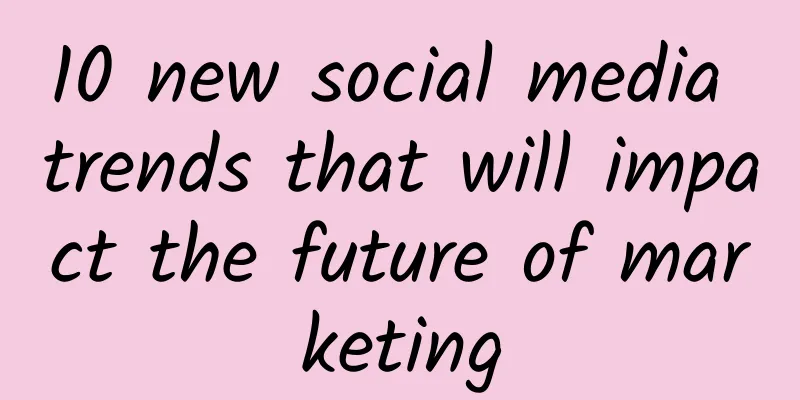10 new social media trends that will impact the future of marketing

|
In 2015, many brands have gradually learned how social media can help them achieve their business goals. However, this learning process is full of bitterness and tears. They constantly use trial and error to challenge the new world influenced by new social media trends. Sometimes they succeed overnight, but often they hit their heads against the wall. The cruel reality is that as time goes by, new social media trends have changed again, which leads to the need for brands to adapt to these trends again, otherwise all their previous efforts will be in vain. Therefore, in order to facilitate brands to quickly adjust their strategies, Peter Kim, Chief Digital Officer of Cheil Worldwide, shared with us what new social media trends can affect the future marketing landscape. Source: Internet |
<<: Basic research report on mobile social behavior of post-90s in second-tier cities
>>: Pew: Tablets enter the loser era
Recommend
Can I eat Zhi during my menstrual period?
Menstruation is a special period for women. Many ...
Is it easy to get hungry after the fertilized egg implants?
The expectant mother's body temperature dropp...
A brief discussion on the significance of social network data analysis
With the rapid development of information technol...
Why do nipples hurt after ovulation?
Many people may wonder why nipples hurt after ovu...
Will mild cervical erosion affect fertility?
Generally, after the symptoms of cervical erosion...
How to do a pelvicoscopy
Pelvic endoscopy is a common examination method. ...
What causes bleeding after fallopian tube closure?
As the number of infertile people in today's ...
What is the cause of papillary granules at the urethral opening?
The urethral opening is prone to many diseases, a...
No one wants a woman who smells like this, no matter how beautiful she is.
The temperature is high and the sun is scorching ...
How to make hawthorn jelly? How to make hawthorn chrysanthemum tea?
Hawthorn fruit can be eaten raw or made into pres...
Diagram of stitches for normal delivery
Many women have concerns when they are pregnant. ...
Should I have sex immediately after a strong positive test?
Having sex during ovulation can effectively incre...
How to regulate luteal insufficiency? Three points to know
Luteal insufficiency has an impact on female fert...
What medicine should I use for vaginal itching?
Women are often troubled by vaginal itching, whic...
How to regulate irregular menstruation
Menstruation is a physiological reaction of femal...









